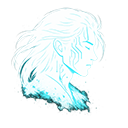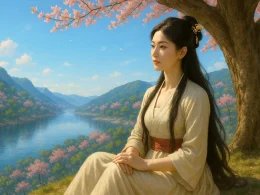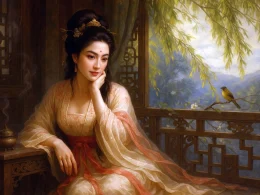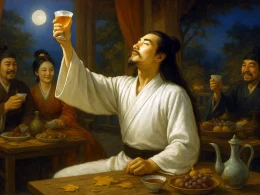After rain the landscape’s fair;
Spring divides its days with equal care.
A thousand flowers rival in their grace.
On painted beams new swallows nest in pairs,
While in a gilded cage a parrot pines for space.
The creeping fig still clings to the wall;
Moss overruns the courtyard, covering all.
From a few mansions floating songs are heard.
Suddenly old memories stir my heart—
Silent, I knit my eyebrows dark as jade uncurled.
Original Poem
「踏莎行 · 雨霁风光」
雨霁风光,春分天气,
千花百卉争明媚。
画梁新燕一双双,玉笼鹦鹉愁孤睡。薜荔依墙,莓苔满地,
欧阳修
青楼几处歌声丽。
蓦然旧事上心来,无言敛皱眉山翠。
Interpretation
Composed around 1054 during Ouyang Xiu's magistracy in Yiling, this lyric reflects his deepened understanding of human emotions after political exile. Adopting a courtesan's perspective with rare empathy, it captures solitary melancholy amid spring's vibrancy - a testament to Ouyang's innovative approach to women's interiority in Song poetry.
First Stanza: "雨霁风光,春分天气,千花百卉争明媚。画梁新燕一双双,玉笼鹦鹉愁孤睡。"
Yǔ jì fēng guāng, chūn fēn tiān qì, qiān huā bǎi huì zhēng míng mèi. Huà liáng xīn yàn yī shuāng shuāng, yù lóng yīng wǔ chóu gū shuì.
Rain-cleansed scenery, equinox air— A thousand blossoms vie in radiant glare. On painted beams, new swallows pair by pair, While jeweled cage confines A parrot's lonely despair.
The stanza constructs a poignant ecological contrast: the unfettered swallows (新燕一双双) embody spring's reproductive vitality, while the caged parrot (玉笼鹦鹉) becomes a living metaphor for constrained femininity. The "jeweled cage" suggests gilded oppression, its prisoner's sleep (愁孤睡) a silent protest against spring's revelry.
Second Stanza: "薜荔依墙,莓苔满地,青楼几处歌声丽。蓦然旧事上心来,无言敛皱眉山翠。"
Bì lì yī qiáng, méi tái mǎn dì, qīng lóu jǐ chù gē shēng lì. Mò rán jiù shì shàng xīn lái, wú yán liǎn zhòu méi shān cuì.
Fig vines cling to walls, moss carpets stone, From pleasure towers, crystalline notes intone. Suddenly memories surge—alone, Wordless, she knits Emererald brows like mountain crests overgrown.
The environment decays from cultivated beauty to wild vegetation (薜荔/莓苔), mirroring the protagonist's psychological transition. The courtesan's "emerald brows" (眉山翠), traditionally a symbol of beauty, here become cartographic - their furrows mapping emotional terrain as complex as mountain ranges. The closing gesture (无言敛皱) demonstrates Ouyang's mastery of expressive silence.
Holistic Appreciation
The theme of this lyric poem is spring sorrow, employing exquisite contrast to juxtapose the beauty of spring scenery with the protagonist’s emotional isolation, highlighting her inner loneliness and resignation. The first stanza contrasts external brightness with internal melancholy, while the second stanza, through environmental descriptions like vines, moss, and songs from a pleasure house, triggers sudden memories of "bygone days." It uses stillness to convey sorrow and objects to express emotion, blending scene and sentiment seamlessly, leaving endless resonance.
The poem adopts a dual-layered contrast structure: first, the comparison between "newly paired swallows" and "a lone-sleeping parrot," and second, the juxtaposition of "spring’s blooming flowers" with "moss-covered desolate walls." Layer by layer, it vividly portrays the image of a woman who may have once enjoyed glory but now lives in solitary seclusion.
Artistic Merits
- Scene-Emotion Fusion, Emotion Embodied in Objects: Swallows, parrots, vines, and moss traces all serve as emotional vessels, carrying the protagonist’s mood.
- Contrast to Amplify Theme: The interplay of liveliness and solitude, companionship and isolation, past and present enhances the poem’s tension.
- Graceful Language, Subtle and Moving: The line "wordless, she knits her emerald brows" appears to depict appearance but actually conveys inner turmoil—deep yet restrained, quintessentially Song in style.
- Female Perspective, Rich in Empathy: The sorrow is expressed through a woman’s psychological experience, genuine and nuanced, revealing the poet’s understanding of female fate.
Insights
Though brief, this poem is filled with profound observations on individual emotion and destiny, embodying the mature technique of "borrowing scenery to express feeling, using objects to symbolize people" characteristic of Song wanyue lyrics. It teaches us: Emotional pain need not be stated directly; it can flow naturally through scenes and details.
About the Poet
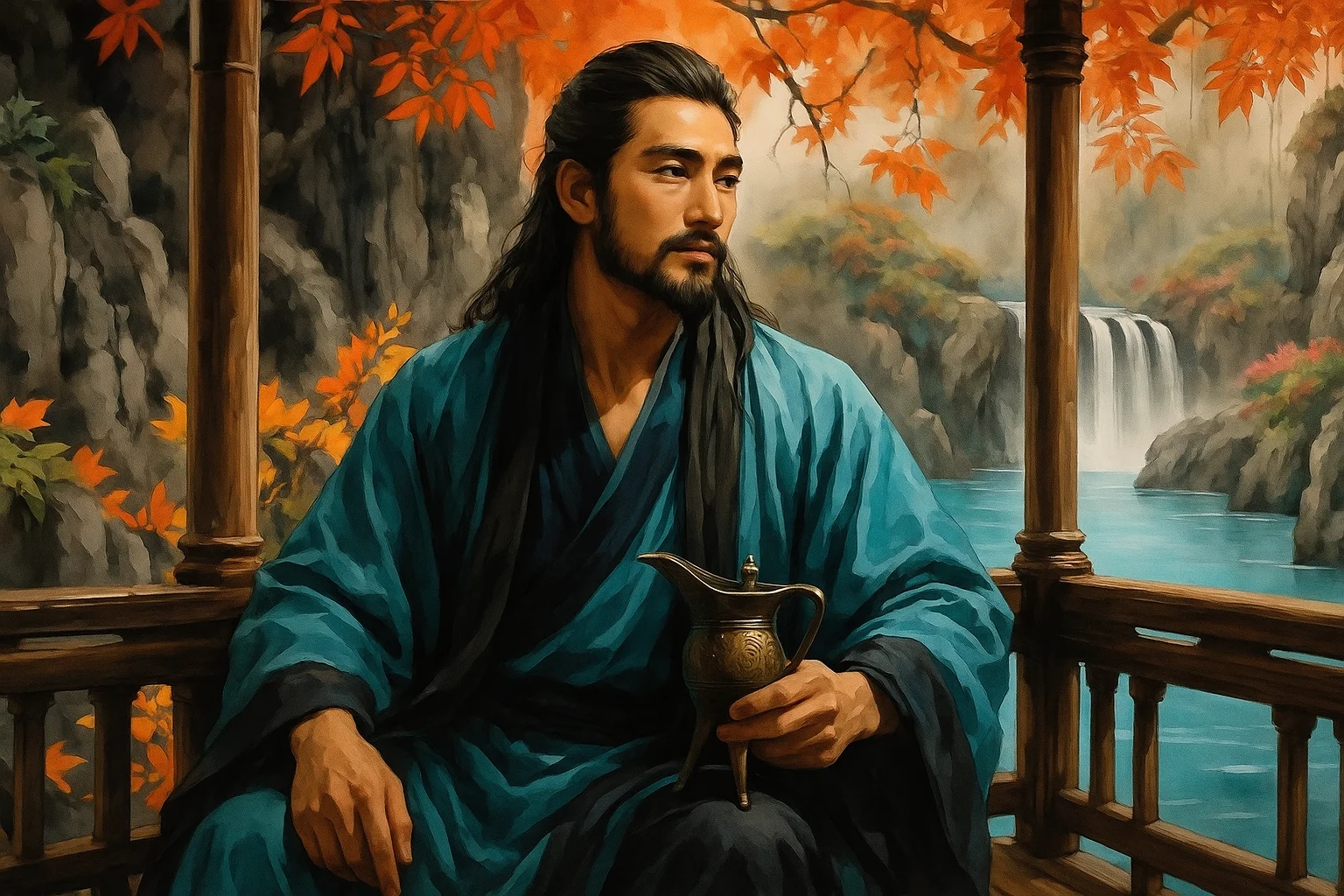
Ouyang Xiu (欧阳修, 1007 - 1072), a native of Yongfeng, Jizhou (present-day Jiangxi Province), emerged as the preeminent literary figure of the Northern Song Dynasty. After attaining the jinshi degree in 1030, he spearheaded a literary reform movement that rejected the ornate Xikun style prevalent at court. As a mentor who nurtured literary giants like Su Shi and Zeng Gong, he laid the foundation for the golden age of Northern Song literature. Recognized as one of the "Eight Great Prose Masters of Tang and Song," Ouyang stands as the pivotal figure in the transformation of Northern Song literary culture.

